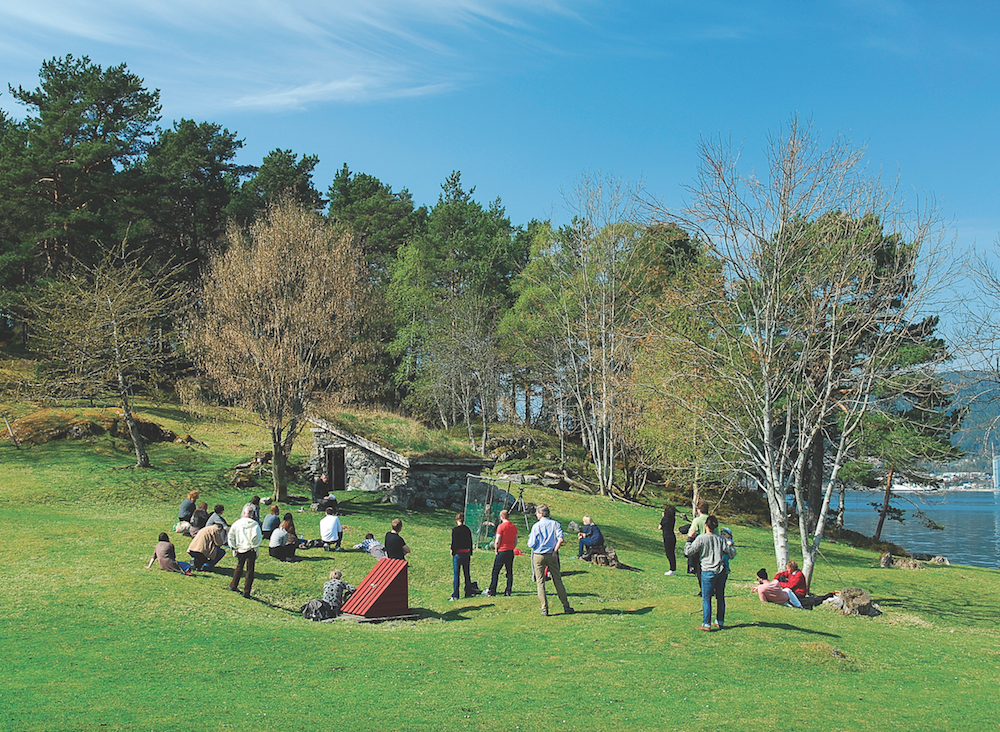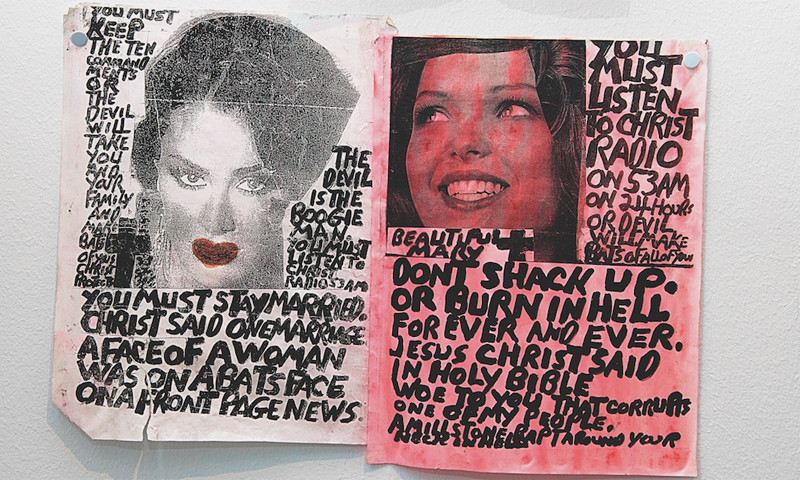27 Senses
Kunstmuseet KUBE, Ålesund, Norway
Kunstmuseet KUBE, Ålesund, Norway

‘27 Senses’ explored the continuing influence of Kurt Schwitters on a generation of artists, poets and composers. Though it plotted out that influence in formal ways – in the use of collage, performance, poetry or installation – the artists participating in the exhibition undertook a more elusive task: grappling with the ghost of the Schwitters mythology in all its literary, political and geographical drift.
Geopolitical context was the exhibition’s organizing principle. KUBE sits in close proximity to the island of Hjertoya, where Schwitters lived and worked for several years after fleeing Nazi Germany. The location became the exhibition’s primary resource and point of departure, and the participating artists took part in short residencies in the region, in some cases creating site-specific work. A day of performances was also held on the island.
‘27 Senses’ was formally and conceptually ambitious, but also lyrical and almost melancholic. The most striking works captured the complex nature of remembrance; within this carefully staged presentation, some pieces complicated the relationship of quotations to their original text. Karl Holmqvist’s Untitled (Revolving Vanes) (2009), for example, an installation that recreated German artist Charlotte Posenenske’s 1967 ‘Drehflügel Serie E’ (Revolving Vanes Series E), was informed by quotation. The homage to Posenenske crossed over into an homage to Schwitters; Holmqvist marked his remake of the former’s walled structure with a series of posters comprising lines of poetry and found images. He also grafittied its walls, an indirect reference to Schwitters’ deteriorating hut on Hjertoya.

Elsewhere in the gallery, Jutta Koether offered another rendition of a hut-like structure, with a frame boxed in on three sides by her representations of Schwitters’ lesser-known landscape paintings, a lovely cut-and-paste survey of Schwitters’ output titled Cinetracts #20–23 (to expose oneself to one’s own un-groundedness) (2009). Meanwhile, Eline McGeorge presented drawings, photographs and sculptures that eerily echoe Schwitters’ collage and sculptural installations.
New York poet Kenneth Goldsmith’s contribution to the exhibition was largely archival; in addition to selections from the online archive UbuWeb, he presented a treasure trove of found signs and posters collected from the streets of New York over an extended period. The compilation of text fragments was the obvious manner in which the installation related to Schwitters, but most palpable was the way Goldsmith created a striking portrait of a place – which seemed especially appropriate within the context of an exhibition so preoccupied with location.
Carl Michael von Hausswolff presented a different kind of art work – the found act, rather than the found object. Part of an ongoing series, he presented a ‘performance’ by Selmer Nilsen, as captured on film. Nilsen acted as a KGB spy during the Cold War and was sentenced to prison in 1967. Once released, he returned to a remote part of northern Norway, where he lived an increasingly isolated and eccentric life until his death in 1991. In the film presented by Von Hausswolff (The Fire, 1971/2006), filmmaker Staffan Lamm tracks Nilsen to his home and asks him a series of questions regarding his past. Midway through the interview, Nilsen abruptly goes outside and proceeds to set a nearby structure on fire. Then, he returns to the house and lies on the ground like a corpse. The next day, he escorts Lamm back to the nearest village, maintaining an intractable silence throughout.
Von Hausswolff did not labour the parallels between the lives of Nilsen and Schwitters; primarily the sense of a life dictated by geopolitical circumstances and brutally cut into chapters against the will of the subjects themselves. What Von Hausswolff framed in The Fire is the will to stage an individual act against the arc of historical movement. Schwitters’ work (in particular his three ‘Merzbau’, 1923–48) was in a sense a series of such individual acts. Much like Holmqvist’s installation, Von Hausswolff’s intervention engaged with the work of the past through a multi-part gesture of rearranging, rewriting and retelling. Crucially, Von Hausswolff did all this in an attempt to capture a simple sense of mystery and wonder; he took a circuitous route, but he achieved a direct channel to the elusive spirit of Schwitters.
























